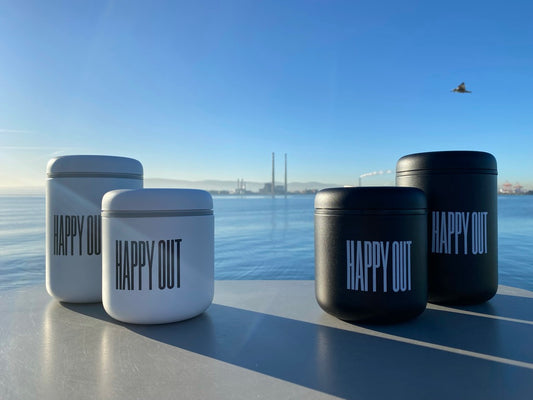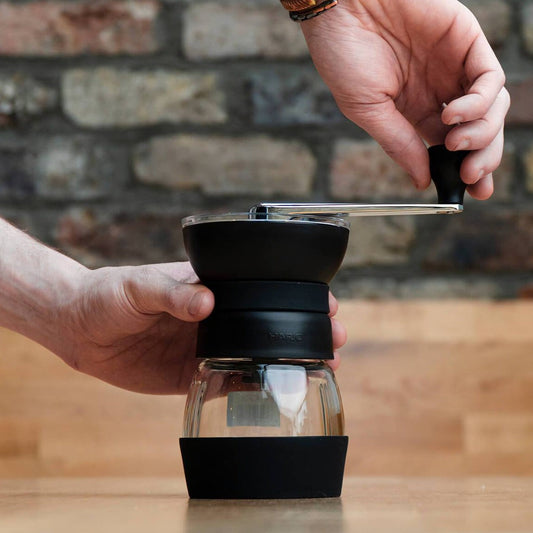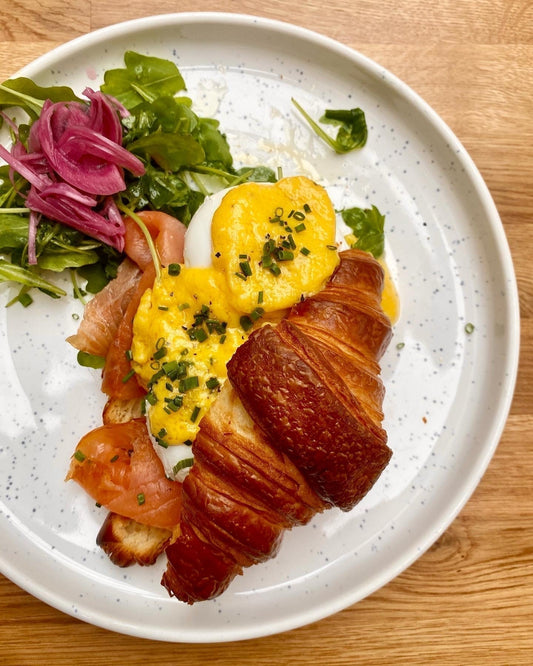Espresso is much more than just a coffee drink, it's a cultural icon, a morning ritual, and for many, a work of art.
This small yet potent beverage has captured the hearts of coffee aficionados worldwide.

In this blog, we'll explore the history, preparation, variations, and cultural significance of Espresso.
Join us on this caffeinated journey to uncover what makes Espresso so special.
The origins of Espresso
The story of Espresso begins in Italy in the early 20th century. The word "Espresso" is derived from the Italian term "caffè espresso," meaning "pressed-out coffee." This refers to the method of brewing coffee by forcing hot water through finely-ground coffee beans under high pressure.
The first Espresso machine was patented in 1901 by Luigi Bezzera, a Milanese inventor. Bezzera's machine used steam pressure to quickly brew coffee, reducing the time it took to make a cup compared to traditional methods. This innovation marked the birth of Espresso as we know it today.
In 1938, Achille Gaggia, another Italian inventor, revolutionized Espresso making by introducing the lever-operated Espresso machine. Gaggia's machine used a spring piston to generate higher pressure, producing a crema—a rich, golden layer of foam that sits atop the Espresso. This crema became a hallmark of high-quality Espresso.
The science of Espresso
At its core, Espresso is a concentrated form of coffee, characterized by its intense flavour, aromatic profile, and rich crema. Achieving the perfect shot of Espresso requires careful attention to several key factors:
1. Grind Size
The grind size of the coffee beans plays a crucial role in the extraction process. For Espresso, a fine grind is essential to ensure that the water can pass through the coffee grounds evenly and extract the desired flavours. Too coarse a grind will result in under-extraction, while too fine a grind can cause over-extraction and bitterness.
2. Water Temperature
The ideal water temperature for brewing Espresso is between 195°F and 205°F (90°C to 96°C). Water that's too hot can scorch the coffee grounds, while water that's too cool can lead to a weak and under-extracted shot.
3. Pressure
Espresso machines use high pressure to force water through the coffee grounds. The standard pressure for Espresso extraction is 9 bars (approximately 130 psi). This pressure ensures that the water extracts the maximum flavour from the coffee grounds in a short amount of time, typically 25-30 seconds.
4. Extraction Time
The extraction time for a shot of Espresso is critical. A typical shot takes about 25-30 seconds to brew. If the extraction time is too short, the coffee will be under-extracted and lack depth. If it's too long, the coffee can become over-extracted and bitter.
5. Coffee-to-Water Ratio
The coffee-to-water ratio, also known as the brew ratio, affects the strength and flavour of the Espresso. A common ratio is 1:2, meaning one part coffee to two parts water. Adjusting this ratio can help fine-tune the flavour profile of the Espresso.

The art of Espresso
Beyond the technical aspects, making Espresso is an art form that requires skill, practice, and a keen sense of taste. Baristas around the world take pride in their ability to craft the perfect shot. Here are some essential skills and techniques that baristas use:
1. Tamping
Tamping is the process of compressing the coffee grounds in the portafilter before brewing. Proper tamping ensures even extraction by creating a uniform bed of coffee grounds. A good tamper should be comfortable to hold and provide consistent pressure.
2. Dialing In
Dialing in refers to the process of adjusting the grind size, dose, and extraction time to achieve the perfect shot. This requires a bit of trial and error, as different coffee beans and machines may require different settings. Baristas often start with a base recipe and make incremental adjustments to find the ideal balance.
3. Sensory Evaluation
A skilled barista uses their senses to evaluate the quality of Espresso. This includes assessing the aroma, flavour, body, and crema. Tasting the Espresso and making adjustments based on the sensory evaluation is a crucial part of the Espresso-making process.
Espresso variations
While a straight shot of Espresso is a delight on its own, there are numerous ways to enjoy this versatile coffee base. Here are some popular Espresso-based beverages:
1. Doppio
A doppio, or double Espresso, consists of two shots of Espresso in one cup. This results in a stronger and more intense flavour, making it a favourite for those who need an extra caffeine boost.
2. Americano
An Americano is made by diluting a shot of Espresso with hot water. This results in a coffee that is similar in strength to drip coffee but retains the rich flavours of Espresso.
3. Latte
A latte is a smooth and creamy beverage made by combining a shot of Espresso with steamed milk and a small amount of milk foam. It offers a mild coffee flavour with a velvety texture, making it a popular choice for those who enjoy a balanced and comforting drink.
4. Cappuccino
A cappuccino is an equal blend of Espresso, steamed milk, and milk foam. This combination creates a rich and flavourful drink with a luxurious texture. The thick layer of foam on top also allows for various latte art designs.
5. Macchiato
A macchiato, meaning "stained" or "spotted" in Italian, is a shot of Espresso with a small amount of steamed milk. This drink offers a strong coffee flavour with just a hint of creaminess. Variations like the caramel macchiato add flavoured syrup for a sweeter taste.
6. Mocha
A mocha is a delightful combination of Espresso, steamed milk, and chocolate. This chocolate-flavoured latte can be made using cocoa powder or chocolate syrup and is often topped with whipped cream and a dusting of cocoa powder or chocolate shavings.
7. Flat White
A flat white is similar to a latte but uses a higher ratio of coffee to milk. This results in a stronger coffee flavour and a velvety texture, with microfoam creating a smooth and creamy mouthfeel. It is a favourite among those who appreciate a robust yet balanced coffee experience.
8. Ristretto
A ristretto is a shorter extraction of espresso, using the same amount of coffee grounds but half the amount of water. This results in a more concentrated and intense shot with a slightly sweeter flavour profile due to the shorter extraction time.
These variations showcase the versatility of Espresso and how it can be enjoyed in many different ways.

The cultural significance of Espresso
Espresso holds a special place in the hearts of coffee lovers around the world. In Italy, Espresso is a daily ritual, often enjoyed standing at a café counter. It's a moment of pause in the day, a chance to savour the rich flavours and engage in conversation with friends and neighbors.
In many cultures, Espresso is more than just a drink—it's a symbol of social connection and hospitality. Offering someone a cup of Espresso is a gesture of warmth and friendship. It's a way to bring people together and create shared experiences.
Espresso culture has also inspired countless innovations in the coffee industry, from the development of high-tech Espresso machines to the rise of specialty coffee shops. Baristas and coffee professionals continuously push the boundaries of what's possible with Espresso, experimenting with new techniques and flavours.
Whether you enjoy a straight shot of Espresso or one of its many variations, the experience of savouring this rich and complex beverage is truly special.
Happy Espresso!







